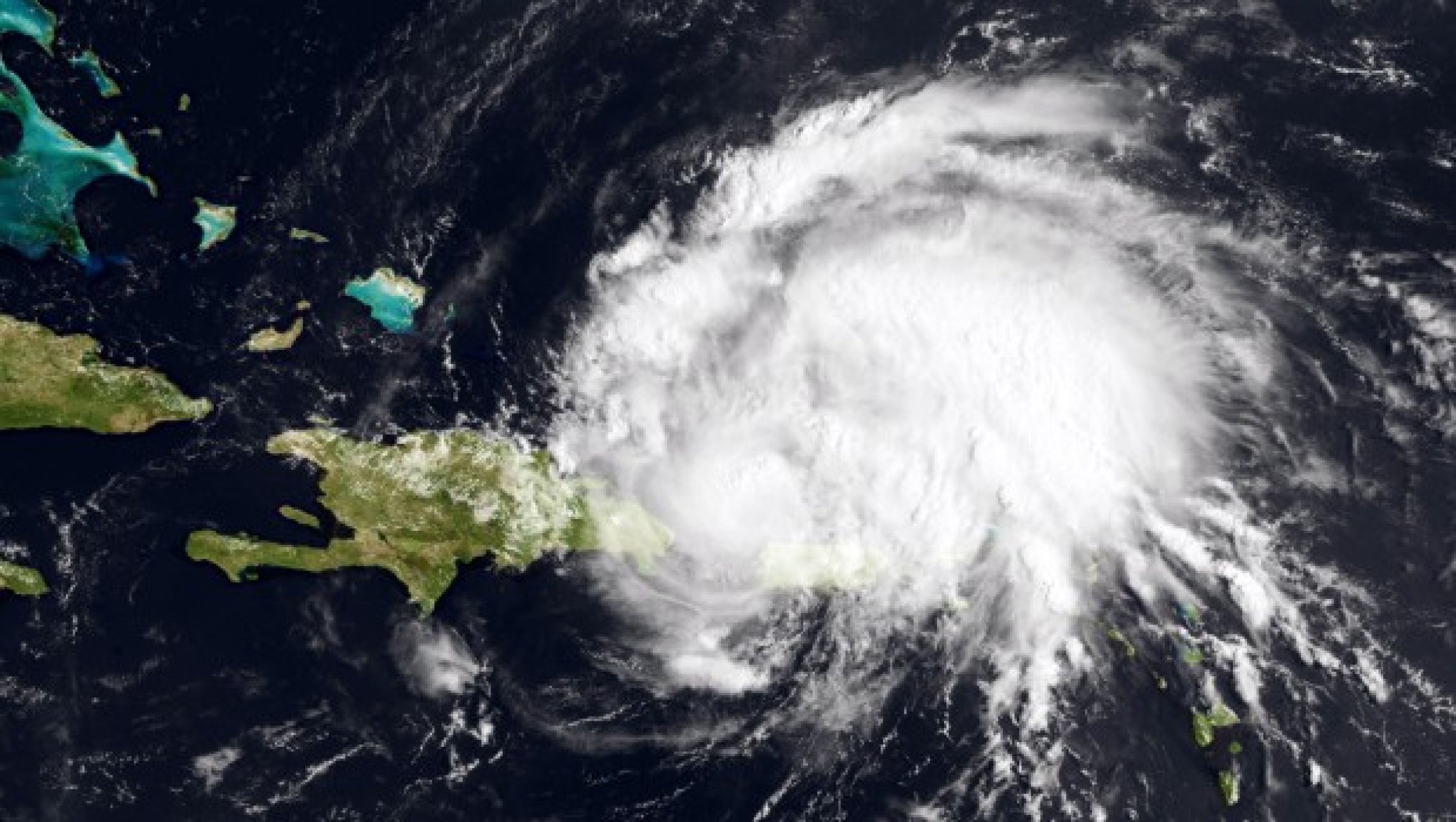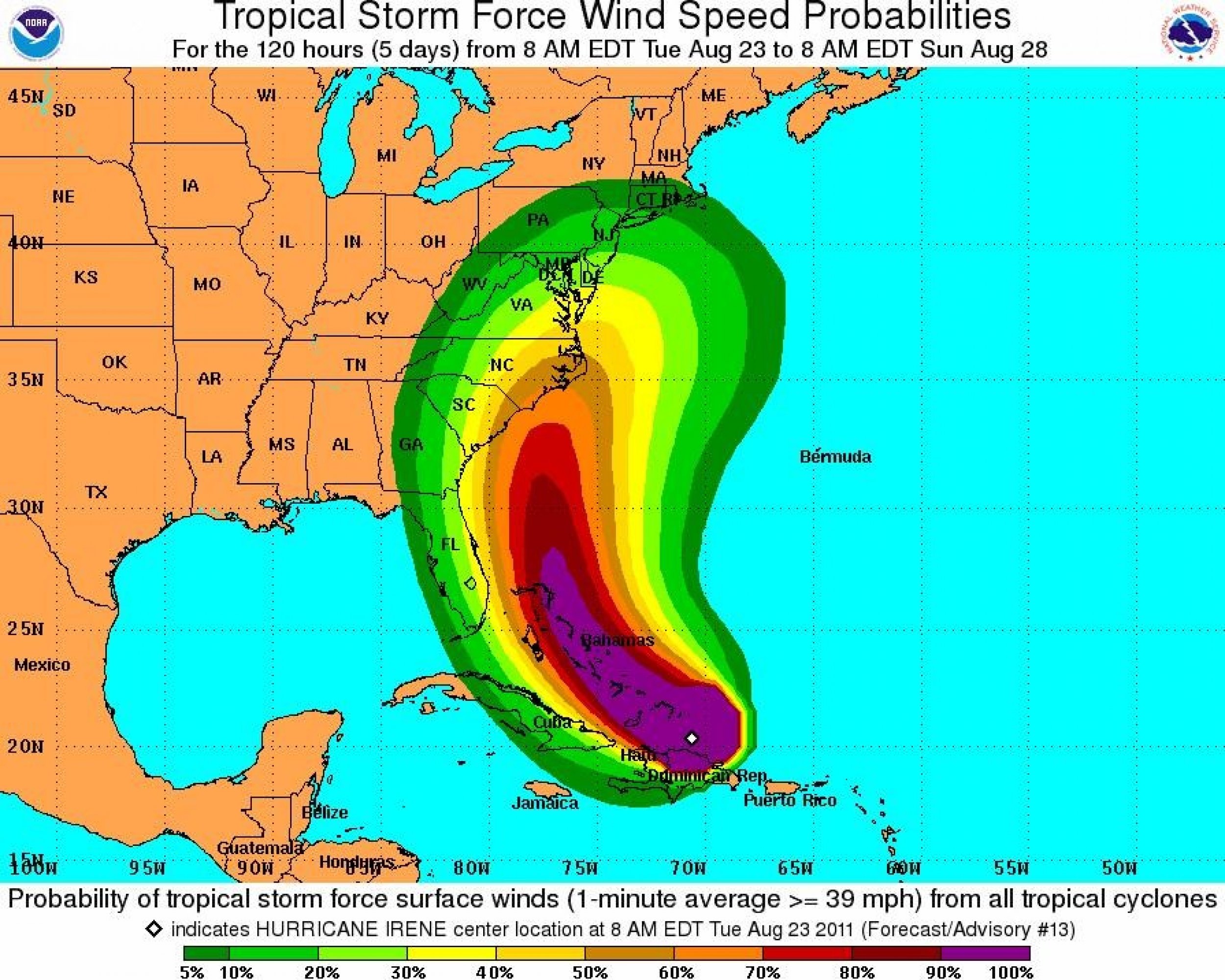Hurricane Irene 2011: Entire East Coast on Storm Path [MAPS]
A strengthening Hurricane Irene is inching away from the Caribbean and is expected to connect the dots through the Bahamas on its way towards the East Coast of the United States on Saturday.
Irene's path has changed slightly from the National Hurricane Center's 8:00 a.m. advisory. As of 11:00 a.m., Irene is expected to hit the U.S. mainland along the North Carolina coast, heading north into Virginia and up the Chesapeake Bay by Sunday morning.
While this will keep it further away from Florida and Georgia, it's bad news for the Mid-Atlantic States.
U.S. Federal Emergency Management Agency (FEMA) Administrator Craig Fugate said Tuesday that the entire East Coast should be on alert.
As of 11:00 a.m., Irene's center was located about 70 miles south of Grand Turk Island or 50 miles north-northwest of Puerto Plata, Dominican Republic.
Maximum sustained winds have remained at 100 mph, making Irene a category two storm on the Saffir-Simpson Hurricane Wind Scale.
Irene is headed west-northwest at 12 mph but is expected to take a more northerly track as winds increase on Wednesday, making Irene a major hurricane.
Currently, all of the Bahamas and the Turks and Caicos islands are under a hurricane warning.
A hurricane watch is in effect for the north coast of Haiti.
Tropical storm warnings are in effect for the north coast of Hispaniola.
Hurricane Irene is expected to move over the Turks and Caicos Islands and Southeastern Bahamas Tuesday night, be near or over the central Bahamas early Wednesday, and near or over the northwestern Bahamas on Thursday.
Irene has become a much larger storm with hurricane-force winds extending outward some 50 miles from the center and tropical-storm-force winds extending outward some 205 miles.
On Monday, Irene eased away from the northwestern Caribbean, leaving nearly one million people in the dark in Puerto Rico, a billionaire's mansion torched by lightning in the British Virgin Islands, and fears of flooding across Hispaniola.
Have a look at the maps below:





© Copyright IBTimes 2024. All rights reserved.












